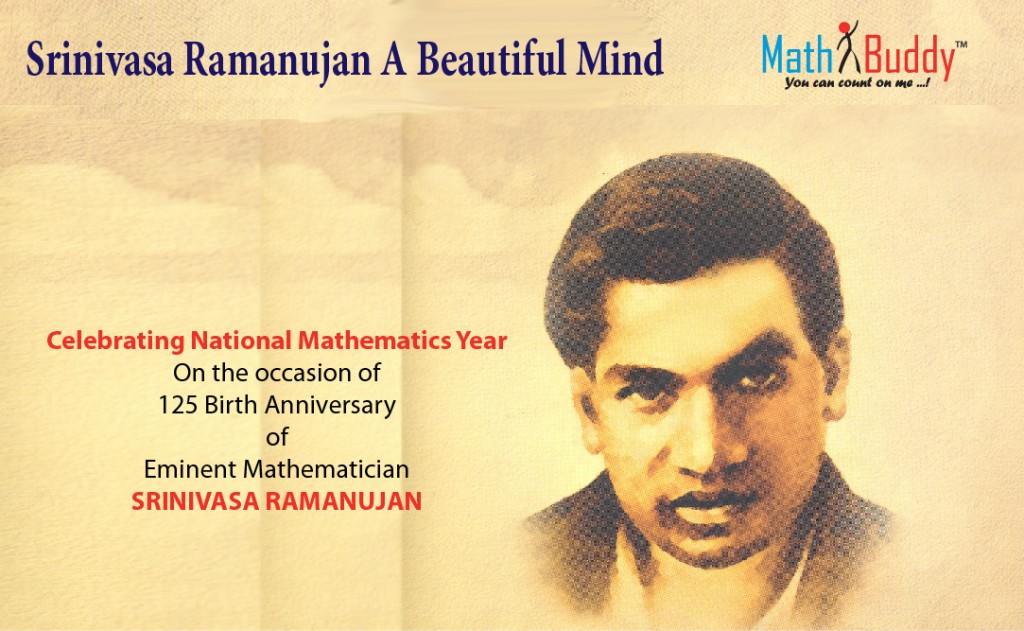
Srinivasa Ramanujan: A Beautiful Mind
https://blog.mathbuddyonline.com/wp-content/uploads/2016/02/Srinivasa-Ramanujan-A-Beautiful-Mind-01-1024x631.jpg 1024 631 admin admin https://secure.gravatar.com/avatar/4281060985443ada8cbf3f192a4cba8f?s=96&d=mm&r=gRamanujan searched for forms and patterns in mathematics. He believed in working more then intuition and induction. He explained relationship between numbers that nobody could even imagine at that time.
An example of this is when Hardy visited Ramanujan in a hospital and casually mentioned that the number plate of the taxi had the number ‘1729’ which seemed to be a dull number with nothing special about it. Immediately Ramanujan came up with the fact that it is the smallest number that can be written as sum of two cube numbers in two different ways: 13 + 123 or 93 + 103. Such was the genius of Ramanujan. This number eventually came to be called as ‘Hardy-Ramanujan’ number as a tribute to him.
You can find contributions of S. Ramanujan pretty much in every field of mathematics including Algebra, Geometry, Trigonometry, Calculus, Number theory etc. Many of his contributions have been given his name – Ramanujan prime, Ramanujan-Soldner constant, Ramanujan theta function and Ramanujan’s sum.
In order to calculate the value of ‘pi’ up to 17 million places using a computer, the present day mathematicians actually use S. Ramanujan’s method. His mathematical contributions have also been widely used in solving various problems in higher scientific fields of specialization, including particle physics, statistical mechanics, computer science, space science, cryptology, polymer chemistry and medical science. You will find applications of Ramanujan’s findings even in designing better furnaces for smelting metal and splicing telephone cable for communication.
Ramanujan did mathematics not for University degrees, but for his infinite thirst for mathematics.
For more interesting details follow us on our Facebook Page
- Posted In:
- Math Buddy
- math learning
- Mathlathon



